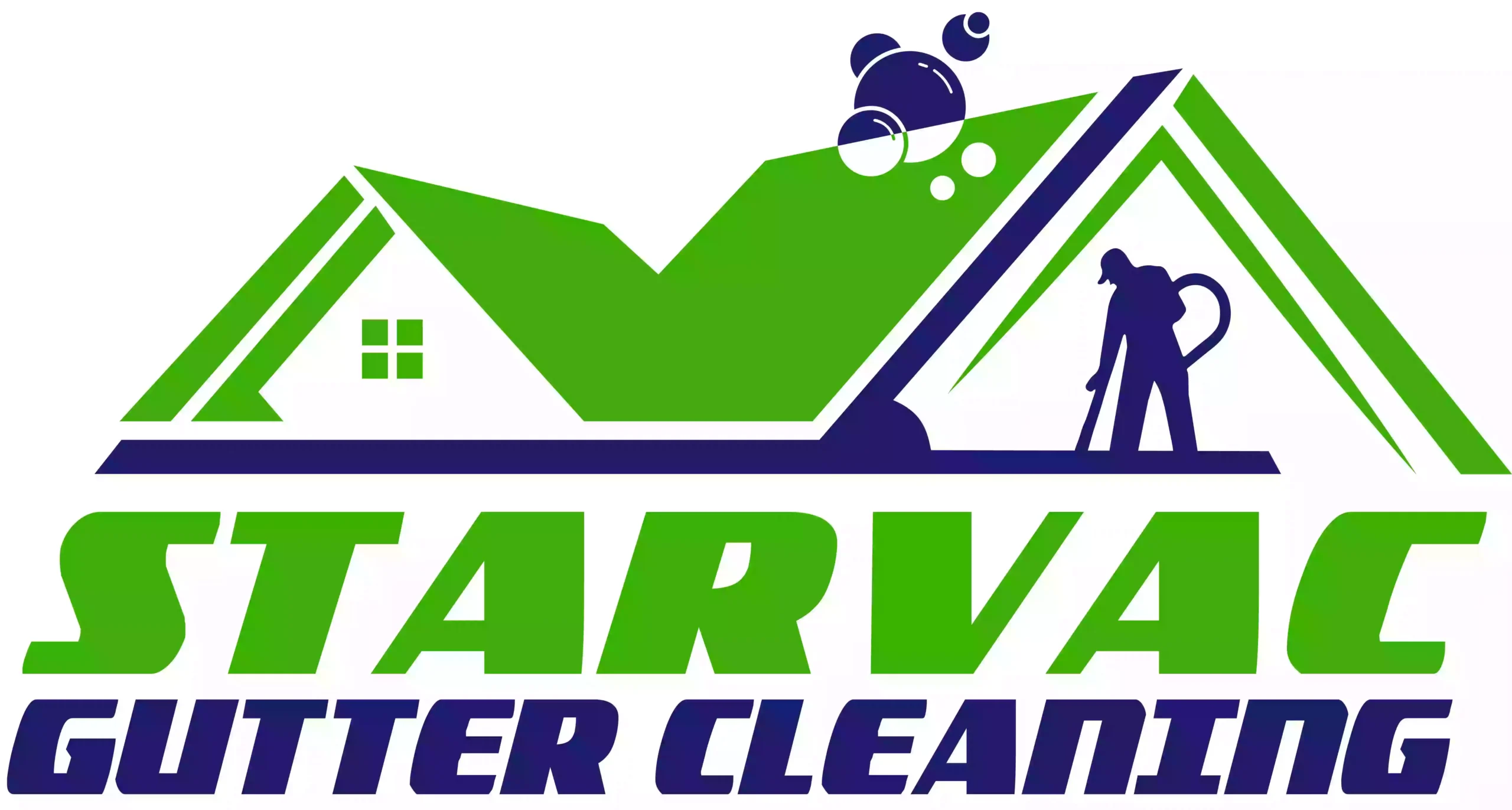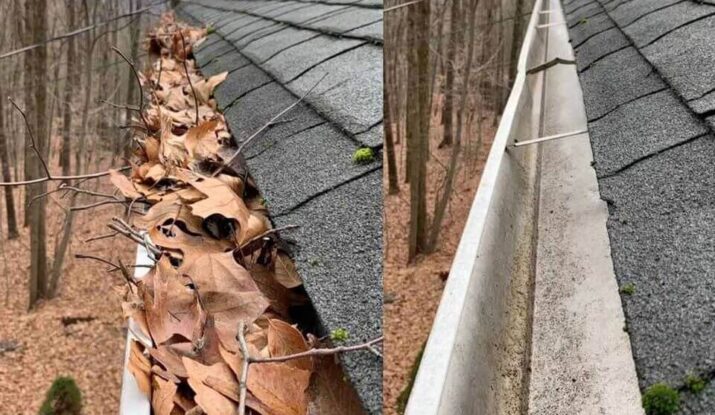Melbourne is known for its changing weather—periods of heavy rain, then long dry spells, followed by wind and sometimes storms. All of this puts pressure on a home’s drainage systems. One of the most important, yet often overlooked, components in protecting a home is the gutter system. When gutters get blocked with leaves, debris, moss, or dirt, water cannot flow away properly. This can lead to serious foundation damage, which is expensive to repair and can even affect the safety of your home.
In this article, we’ll explore how blocked gutters contribute to foundation issues in Melbourne, why it’s especially important here, what warning signs to look out for, and how regular maintenance by professionals like Starvacs can save you thousands in repair costs.
Why Foundation Protection Is Critical in Melbourne
Melbourne homes—especially older ones—often have foundations that are vulnerable. The soil in many areas is clay-based and reactive, meaning it expands when wet and shrinks when dry. When excess water accumulates around the base of a home (i.e., the foundation), it can cause soil swelling, movement, and uneven settling. This soil movement can exert stresses on foundation walls, slabs, footings, and even interior flooring joints. Over time, this leads to cracks, uneven floors, moisture ingress, and in extreme cases structural instability.
Blocked gutters are one of the main causes of water collecting around the foundation. Even a small amount of overflow from a gutter that isn’t directing water away properly can saturate soil over time.
How Blocked Gutters Lead to Foundation Damage
Here are the mechanisms by which blocked gutters damage foundations:
-
Overflowing Water Pools at Base of Home
When gutters are full, water spills over the edges. Instead of flowing from downpipes and draining away, it pours directly onto walls and ground immediately adjacent to the house. This causes pockets of water to pool near the foundation skirt. Over time, repeated saturation weakens soil and causes erosion. -
Poor Drainage / Blocked Downpipes
Even when gutters themselves are clear, if downpipes are blocked or disconnected, water cannot leave the roofline properly. Water that should be channelled away may instead overflow along the walls and collect near the foundation. In Melbourne’s rain events, especially during storm season, this can happen swiftly. -
Soil Erosion & Wash-Away
Overflowing water can wash away topsoil, mulch, and compacted earth around the foundation. This erosion lowers the level of soil around the base of the house, potentially exposing footings, weakening support, and leaving cavities where water can continually collect. -
Soil Saturation and Hydrostatic Pressure
Saturated soil exerts hydrostatic pressure on foundation walls or slabs. Melbourne’s clay soils absorb water and stay wet for long periods. This pressure can bend, crack, or bow foundation walls. The longer water remains in contact with foundation materials, the worse the damage. -
Moisture Seepage & Rising Damp
Water pooling near the foundation perimeter can seep through cracks or porous sections of the foundation material, particularly masonry or brick. This causes rising damp inside walls, which weakens mortar, degrades brick, causes interior walls to become damp, paint to peel, and may encourage mould growth. -
Foundation Movement & Settling
Uneven moisture saturation around a foundation causes differential movement—some parts of the foundation swell, others dry and shrink. This uneven movement leads to cracking (both horizontal and vertical), uneven or sloped floors, and doors/windows that no longer align or open properly.
Why Melbourne Homes Are Especially at Risk
There are particular factors about Melbourne and its climate that exacerbate these problems:
Seasonal Intense Rainfall: During storm seasons, Melbourne receives short but heavy showers. Overflow issues happen quickly when gutter capacity is reduced from blockage.
Reactive Clay Soils: Much of Melbourne’s soil swells after wet weather and shrinks in dry spells. Repeated cycles of wetting and drying near the foundation boundary increase risk of crack development and structural movement.
Older Construction & Insufficient Drainage Designs: Older homes may have been built without modern guttering, drainage or splash-backs. Over time, original drainage paths degrade or get obstructed.
Lack of Ground Sloping / Landscaping Issues: In many properties, ground may slope toward the house, meaning that even when gutters overflow, runoff doesn’t naturally move away from the foundation.
Signs Your Gutters Are Already Causing Foundation Issues
Homeowners should watch for these warning signs that blocked gutters are impacting foundations:
Cracks in the foundation walls or on internal walls near floor level.
Slightly sloping or uneven floors.
Doors/windows sticking or not closing properly.
Dampness or mould inside lower walls of home.
Soil or landscaping around perimeter showing pooling water, soggy patches, or soft ground.
Brickwork or mortar joints near the base of walls showing signs of deterioration.
Visual overflow from gutters during rainfall; water streaming visibly down exterior walls.
Costs of Foundation Damage
Fixing foundation damage is often very expensive. Costs might include:
Excavate around foundation to install drainage or waterproofing.
Repairing foundation walls (cracks, underpinning, etc.)
Re-levelling flooring.
Repairing interior damp issues: plaster, paint, skirting boards.
Removing mould or replacing damaged materials.
Landscaping restoration.
Possible loss in property value if foundation issues persist.
These repairs can run into thousands or tens of thousands of dollars, depending on severity.
Prevention Is Much Cheaper Than Repair
Regular gutter maintenance and managing drainage proactively is far less expensive. Following are maintenance steps and strategies homeowners should adopt:
-
Inspect and Clean Gutters at Least Twice a Year
Best times are after autumn (leaf fall) and before heavy rain seasons. Removing leaves, moss, debris that block flow. -
Ensure Downpipes Are Clear and Properly Connected
Check that all downpipes lead away from the house and discharge water safely (ideally into drainage or stormwater system). -
Check Slopes of the Ground / Soil Around Foundation
Ground should slope away from the house so that water naturally moves away. Grading or landscaping may be required. -
Install Gutter Guards / Leaf Screens
These reduce the amount of debris that reaches gutters and lower frequency of needed cleaning. -
Inspect for Leaks, Sagging, or Damage
Gutter joints, seams, fascia boards. If gutters are detached or sagging, they may not flow correctly, increasing overflow problems. -
Ensure Correct Overflow Paths
During heavy rainfall, ensure that water spill is diverted away from base. Splash-backs or small extensions from downpipes can help. -
Professional Inspections
Once a year, have experts inspect gutters, downpipes, ground slopes, and foundation leakage or moisture ingress potential.
How Starvacs Helps Melbourne Homeowners Prevent Foundation Damage
At Starvacs Cleaning, we specialise not just in cleaning gutters, but safeguarding homes against the hidden damage blocked gutters can cause. Here are how we assist:
Thorough gutter and downpipe cleaning using professional safety equipment.
Inspection services to identify early warning signs of overflow, damage, sagging, leaks.
Recommendations for drainage improvements around homes including slope correction, downpipe extensions, splash-backs.
Gutter guard installation advice to reduce debris buildup.
Seasonal maintenance plans tailored to Melbourne’s weather patterns.
Prompt service during storm season so that homes are ready for heavy rains.
Real-Life Costs vs Investment
To help illustrate, consider this example:
A homeowner neglects gutter cleaning. During a heavy rain, their gutters overflow, water pools around a foundation, causing cracks and moisture seepage.
The cost to fix: foundation crack repair + soil regrading + replacing damaged plaster/walls + repainting + landscaping. Could cost multiple thousands of dollars.
Versus cost of preventive maintenance: cleaning gutters twice a year + downpipe check + minor adjustments. A small fraction of the cost.
Conclusion
Blocked gutters may seem like a minor nuisance until they start costing you big. In Melbourne’s climate—with its heavy rains, reactive soils, and ageing properties—foundation damage from gutter overflow is a real risk.
It’s much more affordable to stay ahead with regular gutter cleaning, professional inspections, proper drainage, and maintaining the exterior ground slopes than to wait for cracks, dampness, or uneven floors to appear.
If you’re a homeowner in Melbourne, don’t wait until the next big downpour. Protect your foundation today with Starvacs, and save yourself time, stress, and costly repairs tomorrow.

